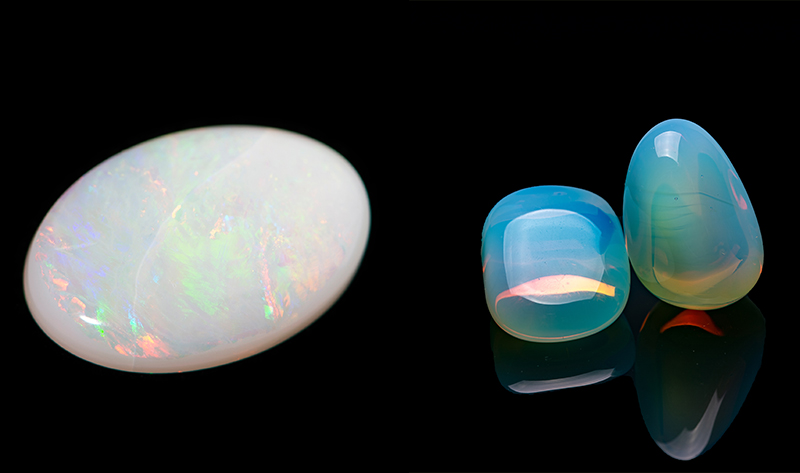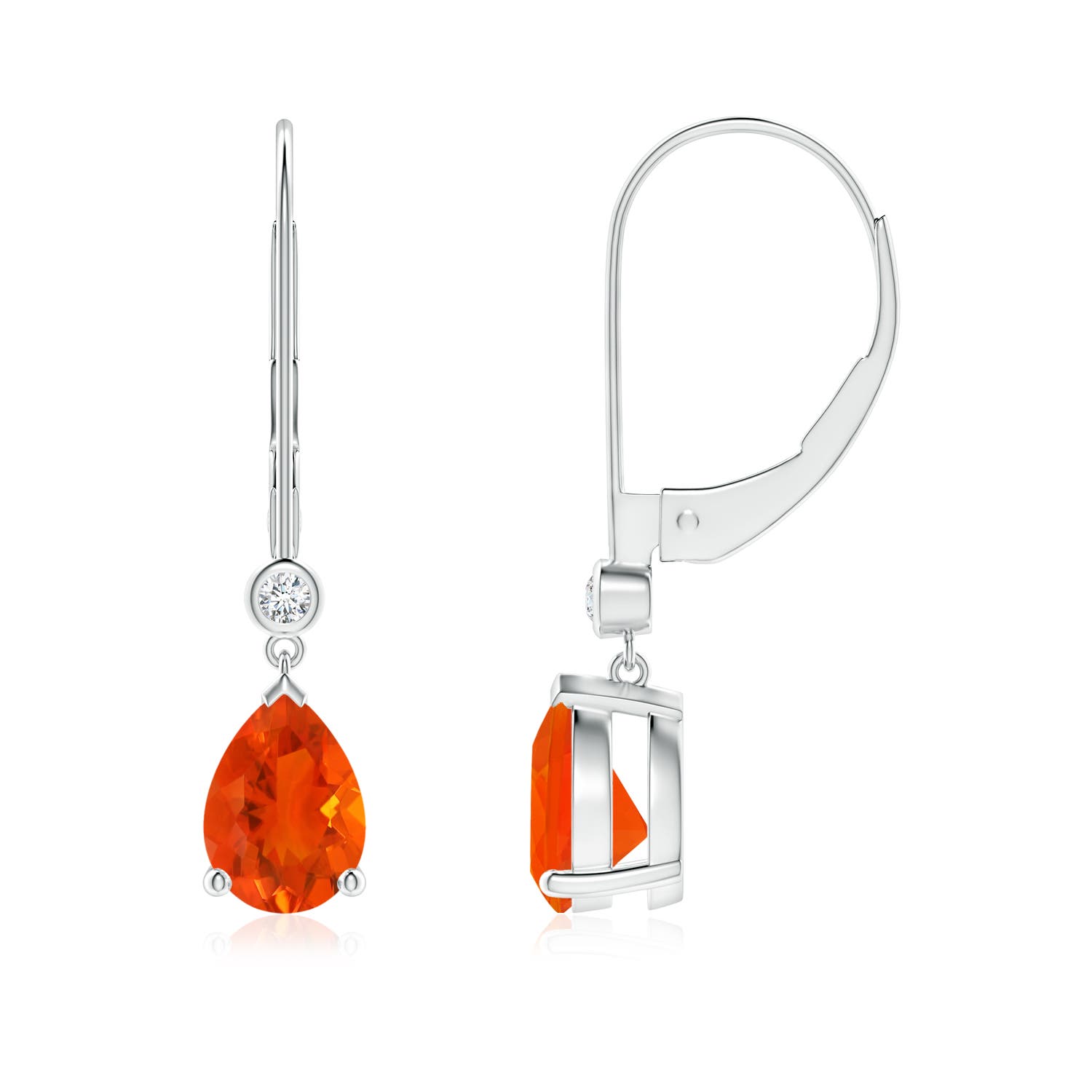Want to add a splash of beauty to your life and wardrobe? You can’t do better than an opal!
Gorgeous, world-renowned and extremely loved, this gemstone has won over the hearts and jewellery boxes of many over the years. That said, people often get confused between an opal and an opalite and never know which one to pick.
Are you one of them? If so, don’t worry! Because in today’s article we’re going to discuss about opalite vs. opal and state all the differences between the two.
Before we get into the nitty-gritty, let’s begin with the basics – what is an opal? At its simplest, an opal is a stunning semi-precious jewel that’s closely related to the quartz mineral. It constitutes millions of tiny, amorphous silica spheres which allow it to diffract light and showcase several hues from different angles.
What is an opalite? Contrary to opals which are 100% natural, opalites are man-made. They look like opals but are typically created from glass, plastic and resin. Due to this, they are considered to be synthetic stones or ‘fakes.’
Opalite vs. Opal: What Are the Major Differences?
| Man-made Opalite | Opal | |
| Colour | Colourless or white with blue and peach tones | Blue, orange, red, green, pink, yellow, white and black |
| Hardness | 5/10 | 5.5-6.5/10 |
| Lustre, Luster | Vitreous | Vitreous, waxy, pearly or resinous |
| Clarity | Translucent to transparent | Translucent to opaque |
1) Colour
- Man-made Opalite: At first glance, this stone may seem either colourless or white. However, when viewed against a dark background, it tends to take on a blue hue. On the other hand, when inspected against a bright background, this imitation piece showcases a peach shade that’s quite eye-catching.
- Opal: This remarkable gem can be found in various shades. These include blue, orange, red, green, pink, yellow and black. Having said that, white opals are by far the most famous of the lot. As a result, one can find several white opal engagement rings and other jewellery items in the market today.
2) Hardness
For the unaware, the durability of a gem refers to its scratch resistance. To measure the same, German mineralogist Friedrich Mohs introduced the Mohs scale of mineral hardness in 1822. Depending on its hardness, each gemstone was graded between 1 – 10 here. Needless to say, the better the gem’s hardness and durability, the higher the score.
- Man-made Opalite: With a 5/10 rating on the Mohs scale, this stone is quite delicate.
- Opal: This gemstone is slightly more durable and features a 5.5 – 6.5 rating on the Mohs scale.
3) Lustre, Luster
- Man-made Opalite: This imitation stone features a vitreous lustre, luster.
- Opal: While an opal’s lustre, luster can also be described as vitreous, it could even appear waxy, pearly or resinous.
4) Clarity
- Man-made Opalite: In terms of clarity, this synthetic gem can range all the way from translucent to transparent.
- Opal: The gemstone features a translucent to opaque clarity range.
Shop Opal Jewellery
Did You Know?
That not all opalites are man-made. The term ‘opalite’ is also used to describe a particular variation of common opal that doesn’t display any play-of-colour. The gemstone is heavily included and is defined by its ‘cat eye’ effect (chatoyancy).
Angara Says:
Interested in buying an opal but don’t know where to get it? Cheque out our collection! From opal earrings to opal rings, we’ve got everything you need to create the perfect daytime and night time ensemble.
Apart from the above, one of the main questions we get asked is ‘what’s the difference between diamond and morganite?’ To find out the answer to this, read our article titled ‘diamond vs. morganite – difference between diamond and morganite.’
If you’re unsure about the differences between morganite and moissanite, you can cheque out our post titled ‘morganite vs. moissanite – difference between morganite and moissanite.’































